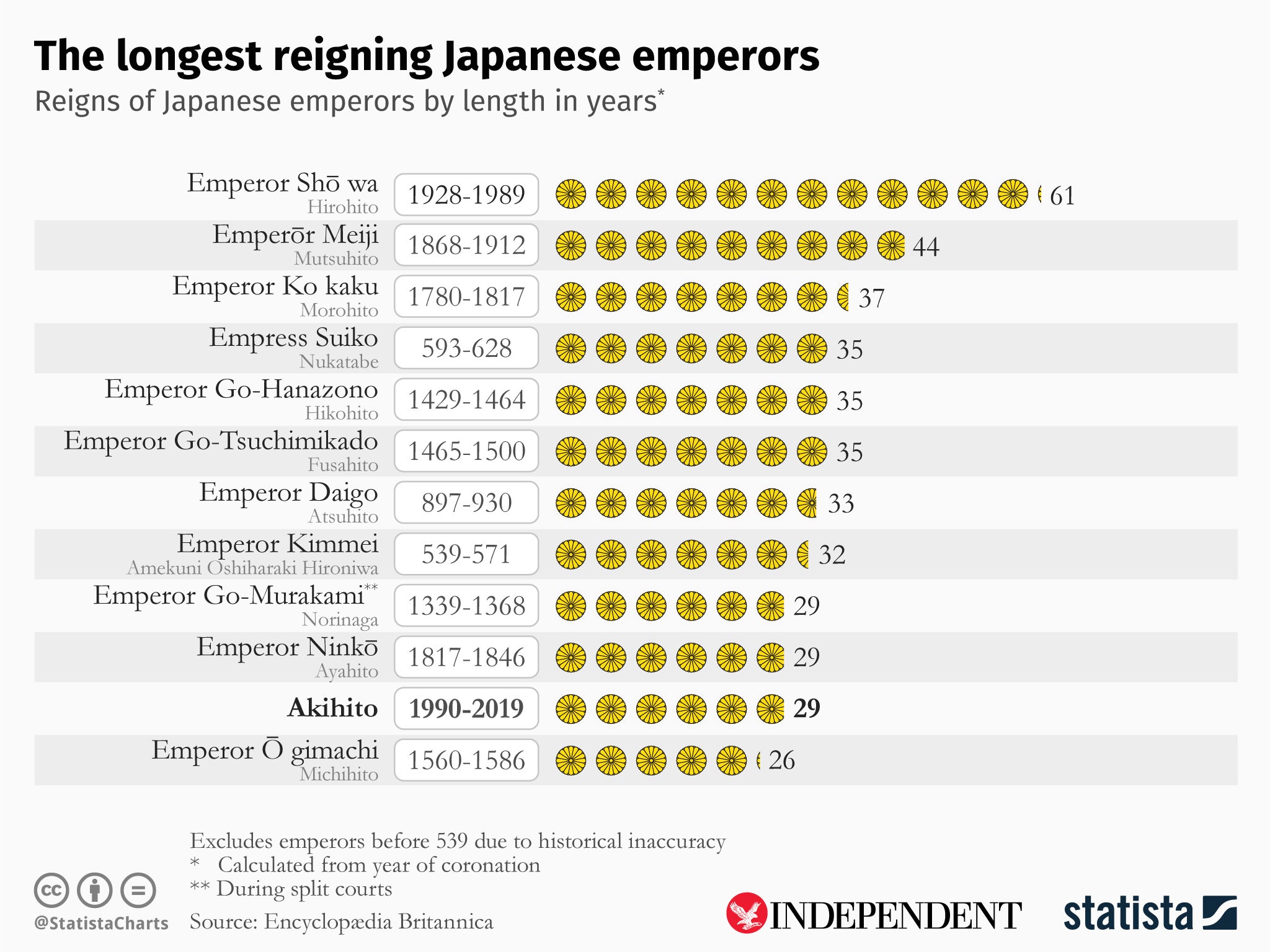Japanese emperor Akihito begins historic abdication after 31-year reign
Akihito becomes country's first monarch to step down in more than 200 years

Your support helps us to tell the story
From reproductive rights to climate change to Big Tech, The Independent is on the ground when the story is developing. Whether it's investigating the financials of Elon Musk's pro-Trump PAC or producing our latest documentary, 'The A Word', which shines a light on the American women fighting for reproductive rights, we know how important it is to parse out the facts from the messaging.
At such a critical moment in US history, we need reporters on the ground. Your donation allows us to keep sending journalists to speak to both sides of the story.
The Independent is trusted by Americans across the entire political spectrum. And unlike many other quality news outlets, we choose not to lock Americans out of our reporting and analysis with paywalls. We believe quality journalism should be available to everyone, paid for by those who can afford it.
Your support makes all the difference.Japanese emperor Akihito has begun his abdication from the throne, becoming the country’s first monarch to step down in more than 200 years.
The 85-year-old was granted legal permission to abdicate after saying he felt unable to fulfil his duties because of his age and declining health.
He will be succeeded by his eldest son Crown Prince Naruhito on Tuesday, bringing his 31-year reign, known as the Heisei (achieving peace) era, to an end.
Naruhito will ascend the Chrysanthemum throne on Wednesday, marking the beginning of a new imperial era called Reiwa.
Emperor Akihito began his abdication rituals on Tuesday by reporting his retirement to the gods at the main shrine of Kashikodokoro where the sun goddess Amaterasu, said to be the direct ancestress of the imperial family, is enshrined.
He was expected to announce his retirement before other members of the royal family and top government officials at a palace ceremony later in the day.
Naruhito will inherit the Imperial regalia of sword and jewel, as well as Imperial seals as proof of his succession, as the nation’s 126th emperor, according to the palace count.
Workers in Japan were given an extra-long 10-day holiday to mark the occasion.
The break began on 27 April and will run into the regular national public holiday known as “Golden Week” which lasts until 6 May.
While many seized the opportunity and booked to travel abroad, others expressed their concern about not knowing how to spend their time and over a lack of childcare.
The last time a Japanese monarch relinquished the throne was in 1817.
Akihito grew up during World War Two and was 11 when his father Hirohito announced the end of the conflict on radio.
He took the throne in 1989 and devoted his career to making amends for a war fought in his father’s name.
Akihito visited China in 1992 and offered what was considered the strongest expression of regret over the war.

He has also visited the Philippines and other Pacific islands conquered by Japan that were devastated in fierce fighting as the US-led allies took them back.
Akihito also worked to bring the aloof monarchy closer to the people during his reign.
He became the first emperor to marry a commoner when he wed his wife Empress Michiko, one of many changes he brought to the palace.
The couple also chose to raise their three children instead of leaving them with palace staff, and decided to be cremated upon their deaths in a smaller tomb side by side, also a tradition-breaking step.
According to Jeff Kingston, Asian studies director at Temple University, Akihito was a “strong advocate of the vulnerable and the marginalised in the Japanese society”.
“I think the people really warmed to him and felt that the monarchy was relevant to their lives because of these efforts by Akihito,” he said.
Recent media surveys have shown public support for the imperial family at 80 per cent – the highest ever for the institution.
Akihito will be known as the emperor emeritus and will no longer have official duties after he hands over the throne.
He will not even attend his son’s succession rituals so as not to interfere with the serving emperor.
Akihito is expected to enjoy his retirement by going to museums and concerts, or spending time on his goby research at a seaside Imperial villa.
Akihito and Michiko will move to a temporary royal residence before eventually switching places with Naruhito.
Agencies contributed to this report
Join our commenting forum
Join thought-provoking conversations, follow other Independent readers and see their replies
Comments